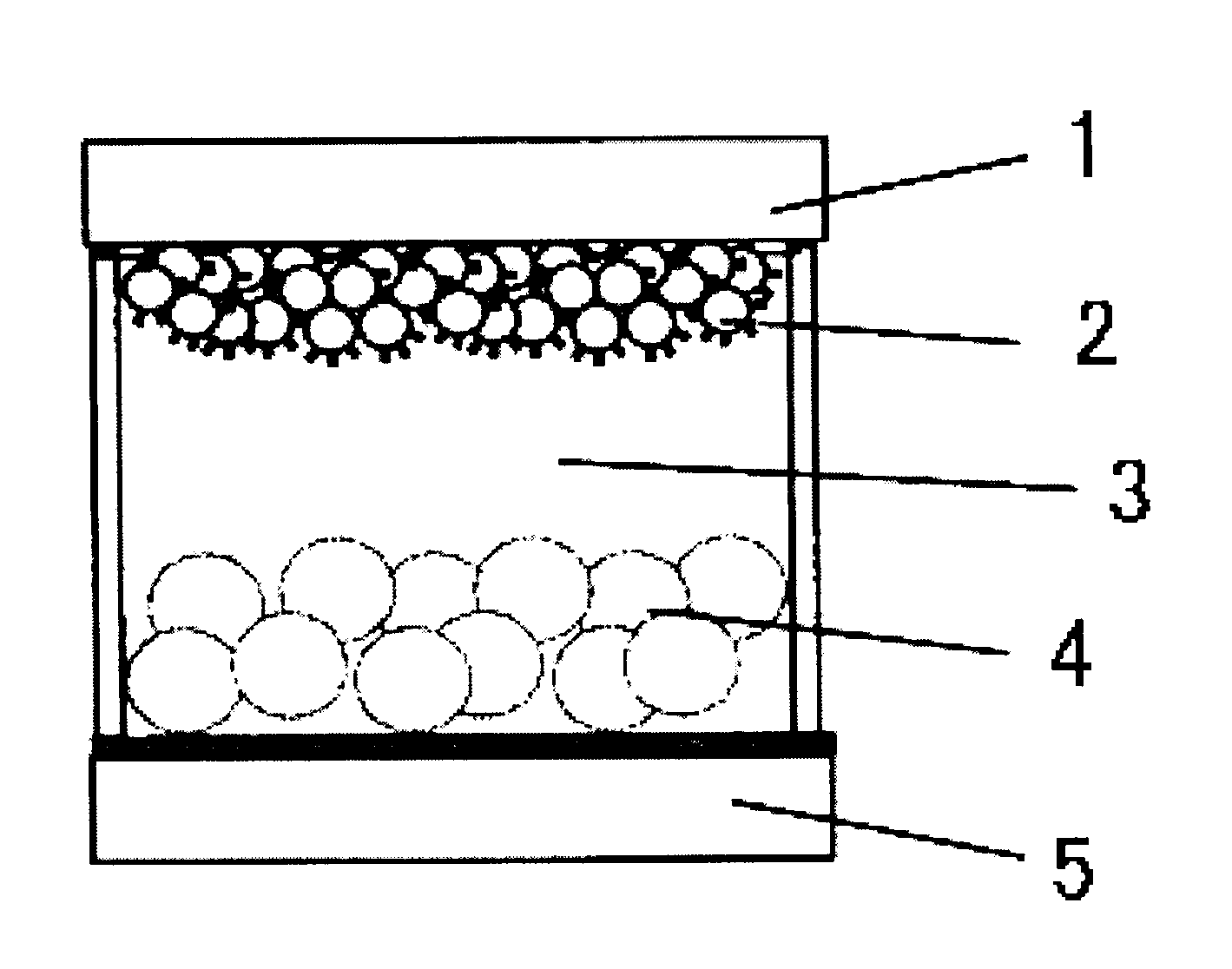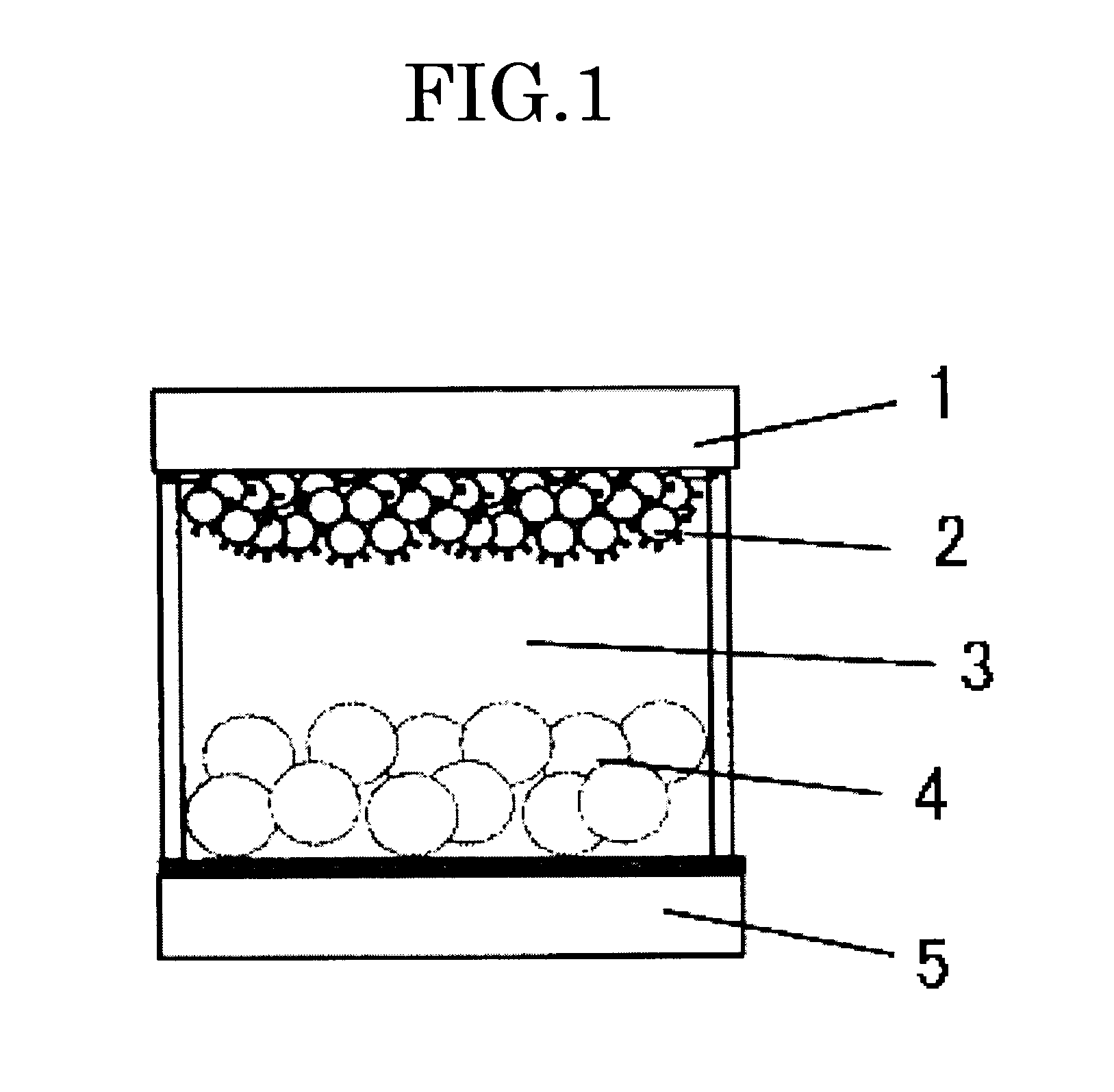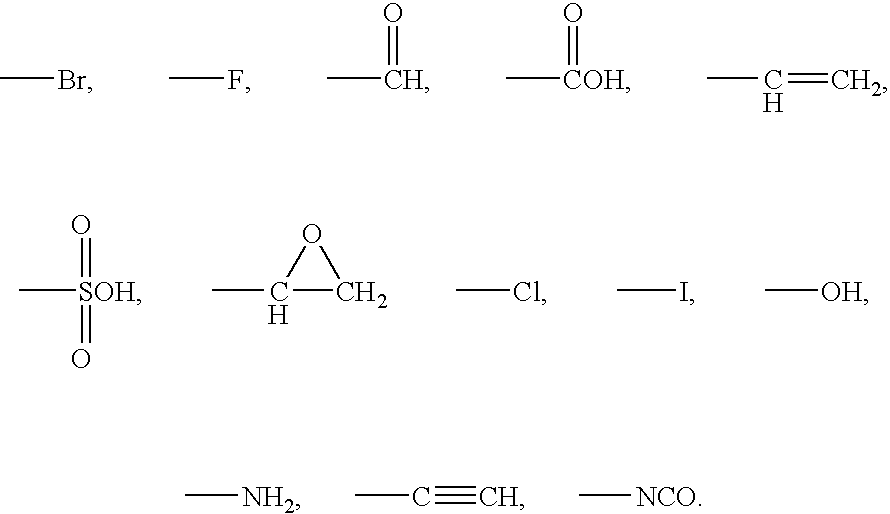Organic-inorganic composite material and method for producing the same, and functional electrode and functional device
- Summary
- Abstract
- Description
- Claims
- Application Information
AI Technical Summary
Benefits of technology
Problems solved by technology
Method used
Image
Examples
example 1
Preparation of Display Electrode
[0050]A dispersion of titanium oxide fine particles (TKS-203 manufactured by Tayca Co., Ltd, average primary particle diameter: 6 nm) was applied onto a portion (area: 1 cm2) of a glass substrate by spin coating using a mask, the glass substrate having a transparent electrode film made of tin oxide on the entire surface, and heated at 450° C. for 1 hour to deposit a titanium oxide layer having a thickness of 2 μm.
[0051]Next, the electrode having the titanium oxide layer was immersed in 100 ml of 5% 3-bromopropyltriethoxysilane toluene solution, and 5 g of triethylamine was added therein, left to stand for 24 hours, and then washed and dried. The obtained electrode was immersed in 5% aqueous 1-ethyl-4-(4-pyridyl)pyridinium chloride solution at 80° C. for 100 hours, and then washed and dried to prepare a display electrode.
—Preparation of Counter Electrode—
[0052]In 10 ml of tetrahydrofuran solution, 5 g of titanium oxide particles having a primary partic...
example 2
[0055]An electrochromic display device was produced in the same manner as in Example 1, except that 1-ethyl-4-(4-pyridyl)pyridinium chloride in Example 1 was changed to 1-hexyl-4-(4-pyridyl)pyridinium bromide.
example 3
[0056]An electrochromic display device was produced in the same manner as in Example 1, except that a display electrode prepared as described below was used.
—Preparation of Display Electrode—
[0057]A dispersion of titanium oxide fine particles (TKS-203 manufactured by Tayca Co., Ltd, average primary particle diameter: 6 nm) was applied onto a portion (area: 1 cm2) of a glass substrate by spin coating using a mask, the glass substrate having a transparent electrode film made of tin oxide on the entire surface, and heated at 450° C. for 1 hour to deposit a titanium oxide layer having a thickness of 2 μm.
[0058]Next, the electrode having the titanium oxide layer was immersed in 0.2% 3-bromopropyl trichlorosilane toluene solution for 2 hours, and then washed and dried. The obtained electrode was immersed in 5% aqueous 1-ethyl-4-(4-pyridyl)pyridinium chloride solution at 80° C. for 100 hours, and then washed and dried to prepare a display electrode.
PUM
| Property | Measurement | Unit |
|---|---|---|
| Structure | aaaaa | aaaaa |
| Photoelectricity | aaaaa | aaaaa |
| Efficiency | aaaaa | aaaaa |
Abstract
Description
Claims
Application Information
 Login to View More
Login to View More - R&D
- Intellectual Property
- Life Sciences
- Materials
- Tech Scout
- Unparalleled Data Quality
- Higher Quality Content
- 60% Fewer Hallucinations
Browse by: Latest US Patents, China's latest patents, Technical Efficacy Thesaurus, Application Domain, Technology Topic, Popular Technical Reports.
© 2025 PatSnap. All rights reserved.Legal|Privacy policy|Modern Slavery Act Transparency Statement|Sitemap|About US| Contact US: help@patsnap.com



